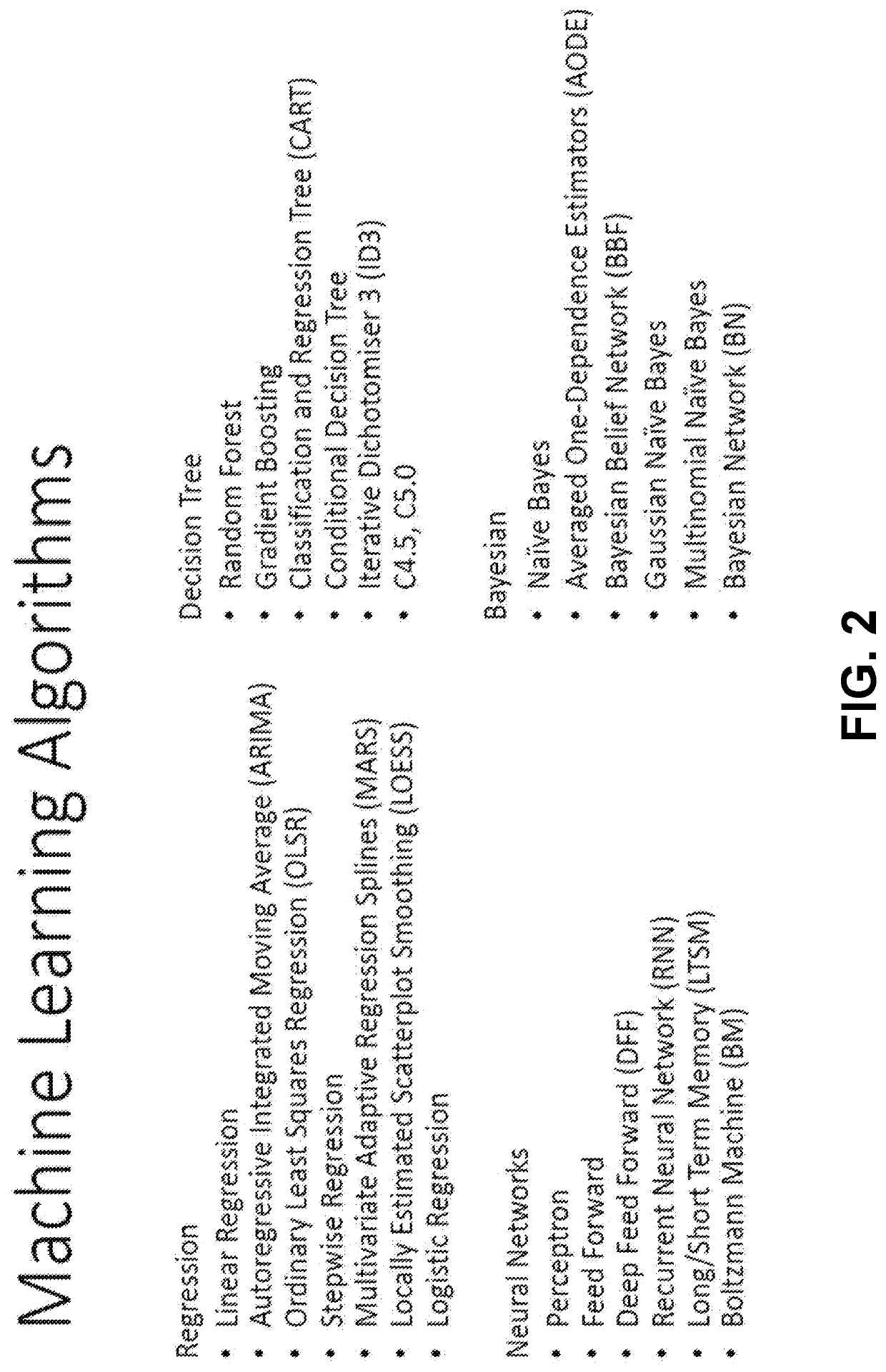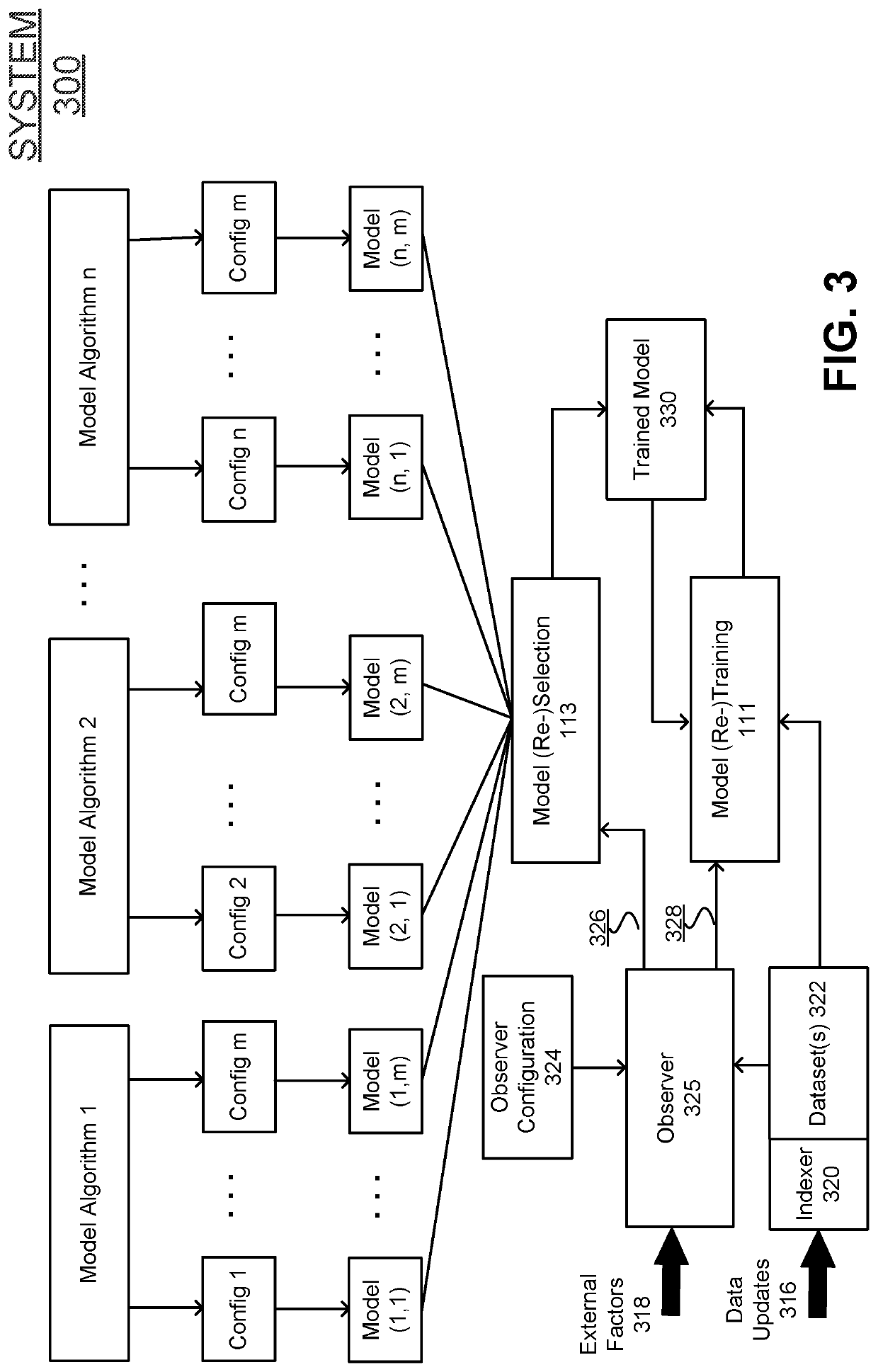Demand Forecasting Using Automatic Machine-Learning Model Selection
a machine learning and demand technology, applied in the field of demand forecasting, can solve the problems of inefficiency of managing a workforce, inability to predict the amount of labor needed in advance, and a whole host of costs and inefficiencies
- Summary
- Abstract
- Description
- Claims
- Application Information
AI Technical Summary
Benefits of technology
Problems solved by technology
Method used
Image
Examples
example processes
[0046]The following figures depict flow charts illustrating various example embodiments of a process for forecasting demand using automatic machine learning model selection in accordance with the techniques described in this disclosure. It is noted that the processes described below are exemplary in nature and are provided for illustrative purposes and are not intended to limit the scope of this disclosure to any particular example embodiment. For instance, processes in accordance with some embodiments described in this disclosure may include or omit some or all of the operations described below or may include operations in a different order than described. The particular processes described are not intended to be limited to any particular set of operations exclusive of all other potentially intermediate operations. In addition, the operations may be embodied in computer-executable code, which may cause a general-purpose or special-purpose computer processor to perform operations fo...
example hardware implementation
[0059]Embodiments of the present disclosure may be practiced using various computer systems including hand-held devices, microprocessor systems, programmable electronics, laptops, tablets and the like. The embodiments can also be practiced in distributed computing environments where tasks are performed by remote processing devices that are linked through one or more wire-based or wireless networks. A hardware module may be implemented mechanically, electronically, or any suitable combination thereof. A hardware module may include dedicated circuitry or logic that is permanently configured to perform certain operations. For example, a hardware module may be a special-purpose processor, such as a Field Programmable Gate Array (“FPGA”) or an Application Specific Integrated Circuit (“ASIC”), Programmable Logic Device (“PLD”), etc.
[0060]A hardware module may also include programmable logic or circuitry that is temporarily configured by software to perform operations. For example, a hardw...
PUM
 Login to View More
Login to View More Abstract
Description
Claims
Application Information
 Login to View More
Login to View More - R&D
- Intellectual Property
- Life Sciences
- Materials
- Tech Scout
- Unparalleled Data Quality
- Higher Quality Content
- 60% Fewer Hallucinations
Browse by: Latest US Patents, China's latest patents, Technical Efficacy Thesaurus, Application Domain, Technology Topic, Popular Technical Reports.
© 2025 PatSnap. All rights reserved.Legal|Privacy policy|Modern Slavery Act Transparency Statement|Sitemap|About US| Contact US: help@patsnap.com



